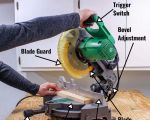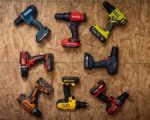
May 26, 2025
SEO Title: How to Safely Use a Chainsaw for Cutting Logs – Expert Tips and Safety Guidelines
SEO Keywords: safely use a chainsaw, chainsaw safety, cutting logs with chainsaw, chainsaw safety tips, chainsaw for cutting logs, safe chainsaw operation
SEO Description: Learn how to safely use a chainsaw for cutting logs with essential safety guidelines and expert tips. Ensure proper techniques and equipment for safe chainsaw operation.
Understanding the Basics of Chainsaw Use
Using a chainsaw to cut logs can seem like a straightforward task, but it comes with inherent risks. To safely operate a chainsaw, it’s essential to understand the tool, its parts, and the way it functions. A chainsaw is designed to cut through wood with a fast-moving chain that revolves around a bar. The chain is powered by an engine, and depending on the type of chainsaw, it can be either gas-powered or electric.
Before diving into cutting logs, familiarize yourself with the various parts of the chainsaw, such as the throttle, chain brake, chain tensioning system, and the safety features. Knowing how each part works will ensure better control and understanding while using the chainsaw. It’s also important to select the right chainsaw for the task at hand, taking into account factors such as log size, wood type, and your experience level.
Essential Safety Gear for Chainsaw Operation
When cutting logs with a chainsaw, personal safety is paramount. Always wear the appropriate safety gear to minimize the risk of injury. Key protective equipment includes:
Chainsaw Chaps or Pants: These provide vital protection for your legs. They’re designed with layers of protective material that can slow down the chain if it makes contact with your body.
Helmet with Face Shield: A helmet equipped with a face shield helps protect against flying debris and potential injuries to the head and face.
Hearing Protection: Chainsaws are loud tools that can cause hearing damage over time. Use ear muffs or earplugs to protect your hearing during use.
Gloves: Chainsaw gloves provide grip and protection for your hands while allowing for control and comfort during operation.
Steel-Toed Boots: Foot protection is essential, especially when handling heavy logs. Steel-toed boots safeguard against falling branches or logs that could injure your feet.
Eye Protection: Safety goggles or glasses protect your eyes from sawdust and debris that can fly during cutting.
By wearing the appropriate safety gear, you’ll significantly reduce the risk of accidents.
Preparing for Log Cutting
Before you start cutting logs, proper preparation is crucial to ensure a safe and efficient process. Follow these steps to get ready:
Inspect the Chainsaw: Check the chainsaw’s condition before use. Ensure that the chain is properly tensioned, lubricated, and sharp. A dull chain will increase the risk of kickback and make cutting more difficult.
Clear the Area: Make sure the area around you is clear of any obstacles. Clear away branches, tools, or other items that may interfere with your movement or cause accidents.
Position the Log Properly: Position the log securely on the ground or a stable surface, ensuring it won’t roll or shift while cutting. If needed, use log holders or wedges to stabilize the log.
Plan Your Cut: Assess the log and plan your cutting strategy. Determine where you’ll start and how the log is likely to fall, so you can avoid dangerous situations and make controlled cuts.
Techniques for Cutting Logs Safely
Cutting logs with a chainsaw requires skill, patience, and attention to detail. Here are some essential techniques to ensure a safe cutting experience:
Grip and Stance: Always hold the chainsaw with both hands and maintain a firm grip. Stand with your feet shoulder-width apart to ensure stability. Avoid standing directly behind the chainsaw to reduce the risk of injury in case of kickback.
Use the Right Cutting Angle: When cutting a log, use the proper angle to make smooth, controlled cuts. For cross-cutting (cutting across the log), position the chainsaw at a 90-degree angle to the log. For felling (cutting down trees), use a notch cut to guide the direction of the fall.
Cut in Layers: Instead of trying to cut through the log in a single stroke, make several smaller cuts in layers. This reduces strain on the chainsaw and improves cutting efficiency.
Never Cut Above Shoulder Height: Cutting at or above shoulder height increases the risk of losing control of the chainsaw. Always cut below shoulder level to maintain better control.
Avoid Kickback: Kickback occurs when the chainsaw’s chain unexpectedly jerks backward towards the operator. To avoid kickback, always keep the tip of the chainsaw away from the wood, and never let the tip touch the log. Also, make sure to engage the chain brake if kickback occurs.
Take Breaks: Chainsaw operation can be physically demanding, so take breaks to avoid fatigue and maintain focus. Stay hydrated and avoid rushing the job.
Dealing with Common Chainsaw Issues
Even with the best preparation, chainsaw issues may arise during log cutting. Here are a few common problems and how to handle them:
Dull Chain: A dull chain can cause slower cutting, excessive wear on the chainsaw, and a higher risk of kickback. Always sharpen or replace the chain when it becomes dull.
Chain Off the Bar: If the chain comes off the bar during cutting, stop immediately and inspect the issue. Reattach the chain according to the manufacturer’s instructions, ensuring it is properly tensioned.
Engine Issues: If your chainsaw’s engine isn’t starting or is running poorly, check the fuel level, spark plug, and air filter. Ensure you’re using fresh fuel, and clean the spark plug and filter as needed.
Clogged Air Filter: A clogged air filter can affect performance. Regularly clean or replace the air filter to keep the chainsaw running efficiently.
Conclusion and Safety Recommendations
Using a chainsaw to cut logs can be a rewarding and efficient task when done safely. By following proper safety protocols, preparing your equipment, and practicing safe cutting techniques, you can minimize risks and ensure a successful operation. Remember, chainsaw safety is not just about protecting yourself—it’s about working smarter and with control.
For additional chainsaw products and tools, or to find expert recommendations, visit ToolNest to access the best tools and gear for your next chainsaw project.








